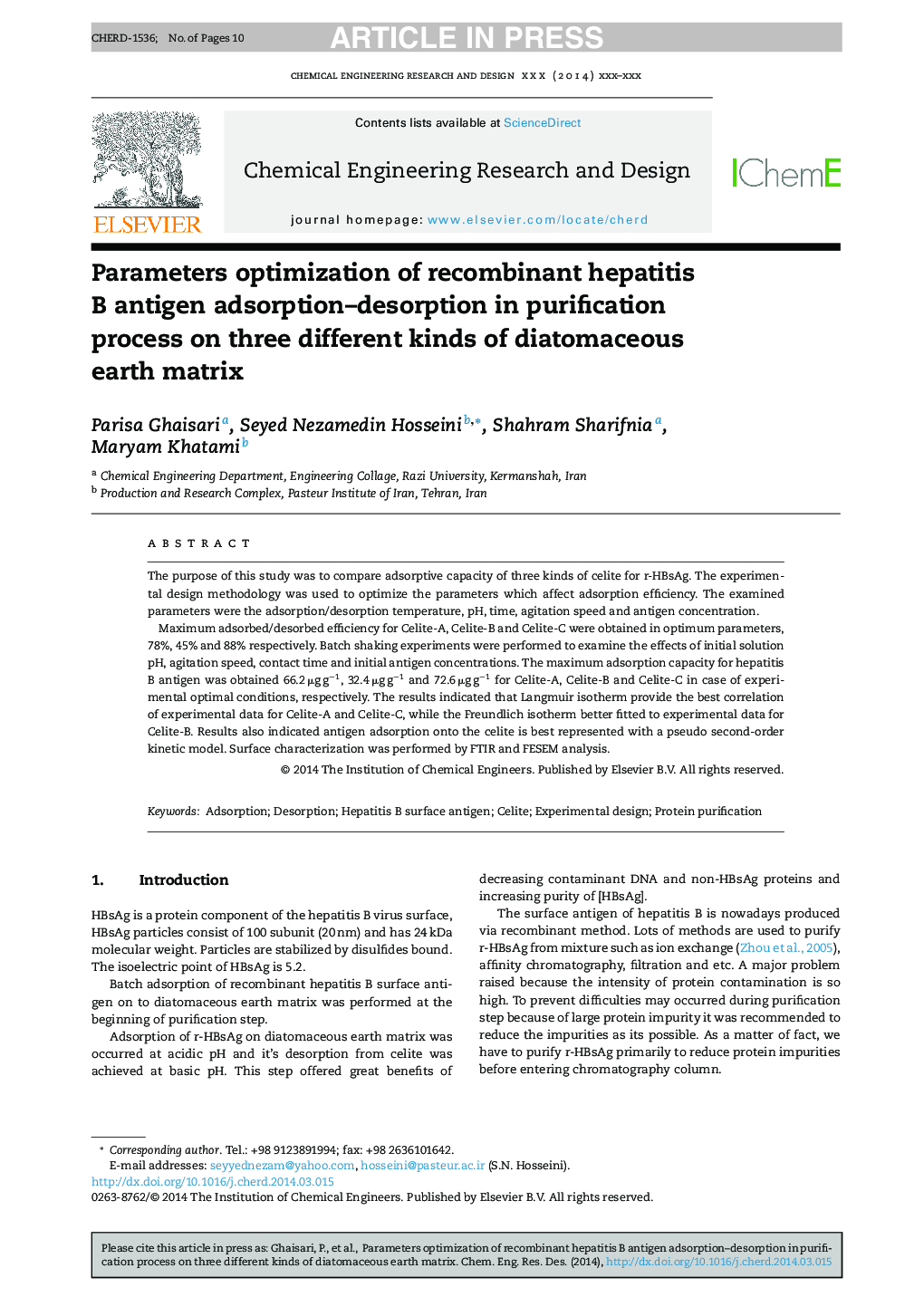| Article ID | Journal | Published Year | Pages | File Type |
|---|---|---|---|---|
| 10385101 | Chemical Engineering Research and Design | 2014 | 10 Pages |
Abstract
Maximum adsorbed/desorbed efficiency for Celite-A, Celite-B and Celite-C were obtained in optimum parameters, 78%, 45% and 88% respectively. Batch shaking experiments were performed to examine the effects of initial solution pH, agitation speed, contact time and initial antigen concentrations. The maximum adsorption capacity for hepatitis B antigen was obtained 66.2 μg gâ1, 32.4 μg gâ1 and 72.6 μg gâ1 for Celite-A, Celite-B and Celite-C in case of experimental optimal conditions, respectively. The results indicated that Langmuir isotherm provide the best correlation of experimental data for Celite-A and Celite-C, while the Freundlich isotherm better fitted to experimental data for Celite-B. Results also indicated antigen adsorption onto the celite is best represented with a pseudo second-order kinetic model. Surface characterization was performed by FTIR and FESEM analysis.
Keywords
Related Topics
Physical Sciences and Engineering
Chemical Engineering
Filtration and Separation
Authors
Parisa Ghaisari, Seyed Nezamedin Hosseini, Shahram Sharifnia, Maryam Khatami,
